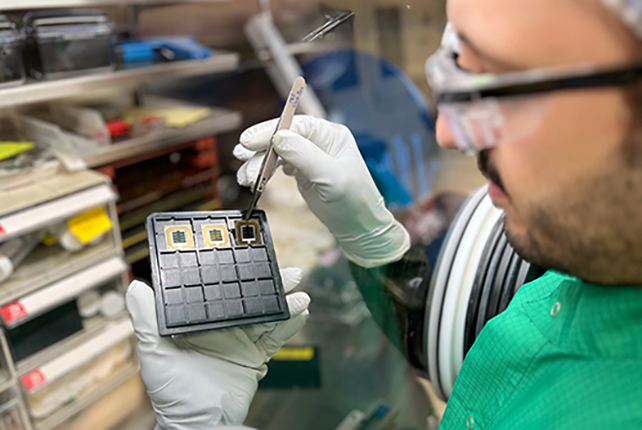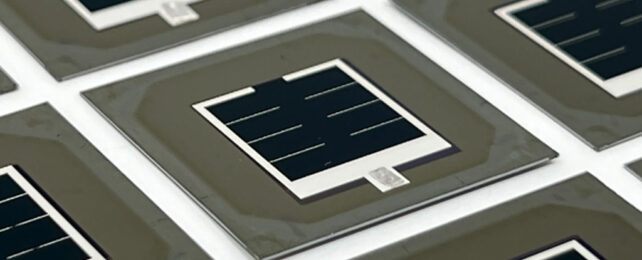Making solar cells more efficient is an obvious win for green energy. It means more electricity from the same number of panels and the same amount of sunlight – and scientists are working hard to take on the challenge.
Now a team from the King Abdullah University of Science and Technology (KAUST) in Saudi Arabia has achieved a record level of efficiency with what's known as a 'tandem' solar cell: one that combines two different materials.
Several materials can work in solar panels, each with its own properties and characteristics. They vary in efficiency, cost, and how easy it is to build them into solar panels reliably and at scale.

In this case, the KAUST researchers combined the more common and cheaper crystalline silicon material with the more efficient but less reliable perovskite material to hit an efficiency level of 33.2 percent – up from the previous record of 32.5 percent for this particular type of cell.
That might seem like a relatively small percentage gain, but it's not when you extrapolate it across millions of solar panels and years and years of sunshine. Of course, this isn't yet ready for commercial use, but you get the idea.
Efficiency is measured as a power conversion efficiency (PCE), where 100 percent would mean all the available sunlight is converted into electricity, with nothing lost. The record was verified by the European Solar Test Installation (ESTI).
"This new record is the highest PCE of any two-junction solar cell under non-concentrated light, attesting the tremendous promise of perovskite/silicon tandems to deliver ultra-high performance photovoltaic modules, which is critical to rapidly achieve renewable energy goals towards combating climate change," says materials scientist Stefaan De Wolf from KAUST.
This new tandem cell works to record-breaking levels partly because the top perovskite material absorbs blue light best, while the lower silicon material absorbs red light best. This spectrum coverage means more of the available sunlight can be captured and converted.
However, the team hasn't offered many more details about how the record was achieved, and as yet, there's no peer-reviewed paper on the technology. The team is continuing to work on improving the working lifespan of the cell and its size, which have traditionally been issues with perovskite.
You'll see different efficiency records for different types of solar cells. For example, scientists have achieved an impressive 47.1 percent efficiency with a cell of six layers rather than two, although the sunlight needs to be concentrated to reach that level.
More materials mean more complexity for manufacturers, of course. Still, progress is heading in the right direction – which means that solar energy will hopefully play an ever-increasing role in green energy production.
